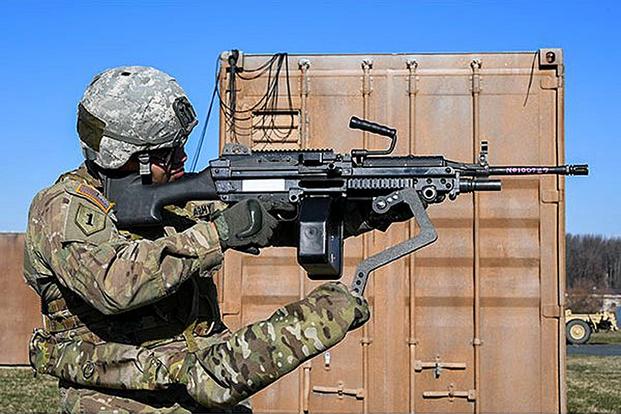Army Research Lab engineers released a video recently showing a soldier running, diving and handling weapons attached to a prototype mechanical arm designed to help reduce the felt weight of carbines and machine guns.
The "third arm" is essentially a multi-joint, stabilizing appendage that attaches to the weapon and the soldier's waist belt to take the weight off the service member's arms and distribute it more evenly on the body, Dan Baechle, ARL mechanical engineer, said in a recent Army press release.
"It can help stabilize the weapon and take the load off of their arms," Baechle said. "It's made from composite materials to make it as light as possible but also to ensure the range of motion that soldiers need," he said.
During a recent test, a soldier wore the four-pound third arm while aggressively moving with an M4-style weapon at the Military Operations in Urban Terrain site at Aberdeen Proving Ground, Maryland.
The device also works well with light and medium machine guns, Baechle said.
"We've actually tested it with the M249 and M240B machines guns," he said. "The M240B weighs 27 pounds, and we were able to show that you can take the weight of that weapon completely off of the soldiers' arms."
Army engineers have improved the device from earlier prototypes after soldiers complained that they get into a prone position while wearing the device, the release states.
ARL conducted a pilot study in 2017 that showed the device can improve marksmanship in addition to reducing arm fatigue.
"We're using that small study to motivate a larger study this year with more soldiers taking a look at dynamic shooting scenarios," Baechle said.
"We get comments from soldiers who tell us different things about the way it feels on their body ... about the way it redistributes the load," he said. "Some like it; some give us tips about the ways it could be improved. And we're using that input to improve the device and improve the design so that it not only works well, but it also feels good."
-- Matthew Cox can be reached at matthew.cox@military.com.










